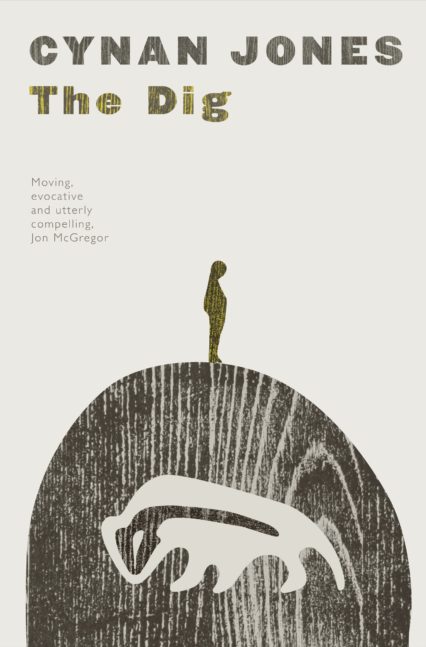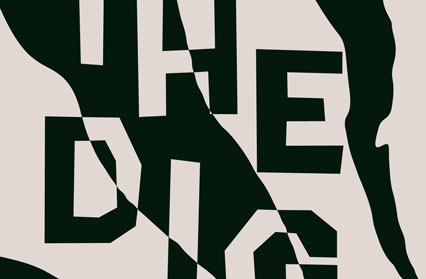Jim Morphy reviews Cynan Jones’ The Dig, a deeply descriptive novel, masterfully written with just 156 pages of near-poetic prose.
He pulled the van into the gateway and dropped the lights. It was a flat night and the van looked a strange, alien colour under it. For a while he sat there carefully.
With these opening words, Cynan Jones’s excellent The Dig gives us a good idea of what to expect from the book. This is so in its literary style: the jarring repetition of ‘van’, the pronoun ‘He’ twice before we have been given a name, the conjunction ‘and’ shaping the first two sentences, the absent commas in the third sentence. It is also true of the passage’s mood: lights have been dimmed, a colour looks ‘strange’, a man is waiting ‘carefully’ in the dark. Surely something is up. Something is looming. Already the pressure is accumulating.
Unsurprisingly, ‘He’ will cause trouble. And he will get into it too.
He – never named, and variously described as the big man, the man and the gypsy – is one of the two protagonists in this, Cynan Jones’s big short novel. The big man is portrayed as an outsider, making his own way as a rat catcher, badger trapper and god knows what else in deepest West Wales. Daniel, a recently bereaved sheep farmer, takes the lead in the other half of The Dig’s twin narrative.
Both characters inhabit the same part of the country. Both are solitary figures. Both, in different ways, have an impressive touch with animals and on the land. But they are very different creatures. With wonderful control, The Dig carefully charts their actions and thoughts over a period of days. Their worlds will eventually collide, of that we have no doubt. But it is a slow-burn until the denouement.
Cynan Jones already has a strong reputation. His first novel, The Long Dry (2006), won a Betty Trask Award. Everything I Found on the Beach (2011) and Bird, Blood, Snow (2012) , his retelling of the Mabinogion tale of Peredur, received praise. But with The Dig, published by Granta, he has now entered the big time.
Rather grandly, Jones’s writing has drawn comparisons with Hemingway, Faulkner and, most particularly, Cormac McCarthy. But, certainly, it is there to some degree in the stark lyricism, punctuation (often lack of), and style (the repetitions, the compound sentences) of The Dig. Jones often takes matter-of-fact descriptions and carves them into near poetic prose. The Dig’s paragraphs – some no more than a sentence long – stand a little apart from each other on the page, to be appreciated in themselves, as well as part of a whole.
There is also something of the ‘beyond straight society’ feel of McCarthy’s Suttree and Child of God. But, while Jones’s chief influences would seem to be the muscular stylists of America, The Dig is a distinctly Welsh book. There is no epic story of the open plains or a great war here. This is a slight tale of two men and the goings-on of the West Wales countryside. It is to Jones’s credit that he manages to pull off a big telling of a small story.
The book’s title and its cover – a striking image of a badger – provide heavy hints as to the scene at the story’s centre. The big man, and a townie father and son along for the ride, go into the woods to capture a badger from its sett. This scene is wonderfully handled, both in its detailed description of the dig’s process and in its examination of the dynamic between the men. In particular, Jones expertly captures the son’s shifting feelings of pride and embarrassment as he takes part in this rite of passage. Masculinity is a prime concern of this book about men who live with the land.

The caught animal is to be sold to the organisers of badger-baiting – the resulting animal-fight provides one of the book’s other visceral set-pieces. The big man prides himself on his OS maps that show the locations of the area’s badger setts. He has done time before, and fear of returning to prison is a rare reason for vulnerability in him. In truth, Jones’s drawing of the no-nonsense big man is a little too crude, and, while the scenes which include him are often superb, the character himself fails to extend far beyond the caricature. And Jones’s making of him into ‘the gypsy’ seems questionable at best.
Jones’s handling of the grieving Daniel is rather more deft and sympathetic. Jones gives us pathos-soaked scenes as the farmer slowly goes about his lambing and wanders around his home. Jones is an acute observer of the processes and rhythms of country life and of loss. There are many subtle observations on bereavement, such as when the farmer feels ‘dismayed at all the things he hadn’t done, the things he had not fixed’. There are luscious descriptions of the couple’s time together: there was ‘the nest-like thing she could be to his tiredness’. There is a stunning love story in The Dig that agonisingly – and cleverly – we are only given glimpses of from behind the barbarity and despair.
With similarly impressive economy, The Dig’s farmland passages highlight both the timeless art of farming (‘as if some farback thing guides his hands about the lamb inside her’) and give a sad picture of the changing nature of the business of farming (‘the weight of paper was crippling to a small farm, and neither of them was built for it’). The Dig regularly comes back to the passing of time and the nature of change, often with a wistful tone.
Jones is particularly good at describing the physicality of all that is going on, with man, animal and the land constantly touching and hitting each other – sometimes in unison, sometimes not.
A little too often, Jones’s more ornate sentences drift into portentousness. So much suggests a deeper meaning, and this constant weightiness can get tiring. Branches are ‘mercurial and somehow elephantine’, and later they look ‘animal and prehistoric’. A ‘distant white noise’ sweeps in ‘bearing some primitive hushed whisper of the permanence of vast things’ (Jones loves the word ‘things’, and to add a ‘ness’ – both are clearly markers of meaningfulness). Some similes get stretched too far or fall flat, such as when clothes and shoes by the door look ‘like an adult crossing the road with a kid’.
But these quibbles over stylistic flourishes should be put aside. Cynan Jones is to be applauded for this deeply accomplished novel. This is a big, bold story of only 156 uncluttered pages. The Dig lives or dies by its prose, its insights into the workings of the countryside and its people. And The Dig most definitely lives.
Hear, hear for the Welsh countryside novel. Bravo, Cynan Jones.
Jim Morphy is a critic and regular contributor to Wales Arts Review.
More of Wales Arts Reviews’ features on Cynan Jones can be found here.











